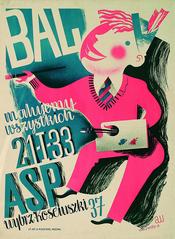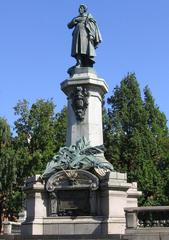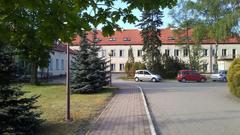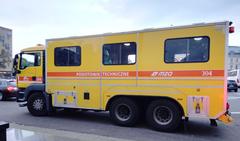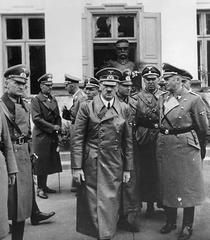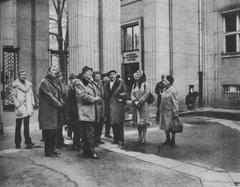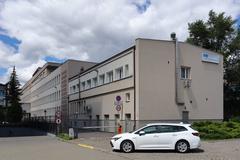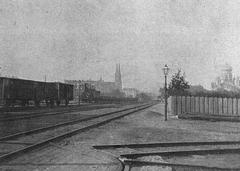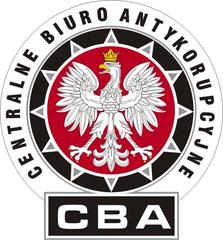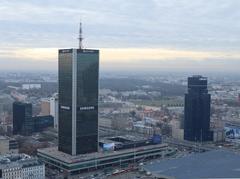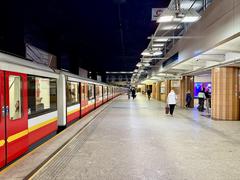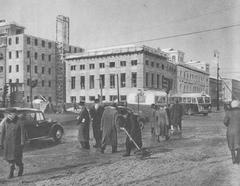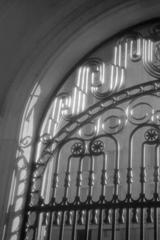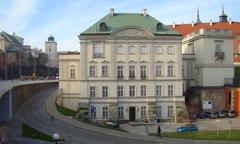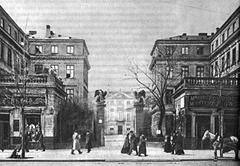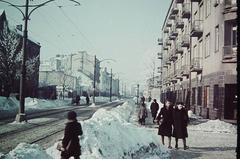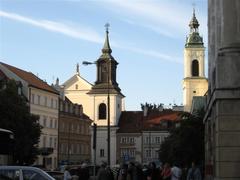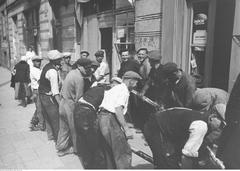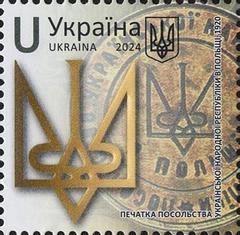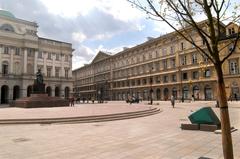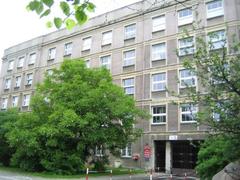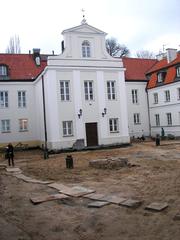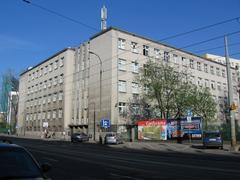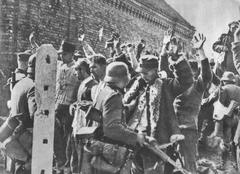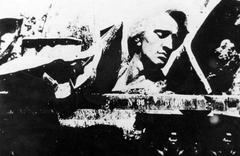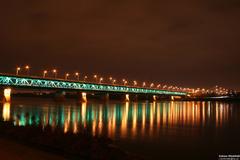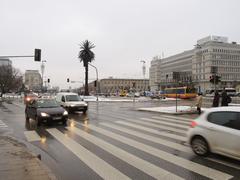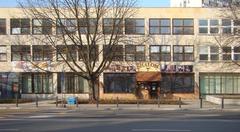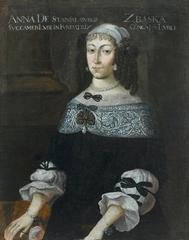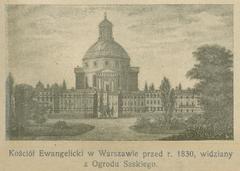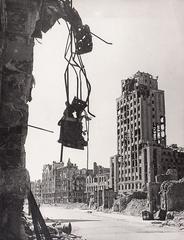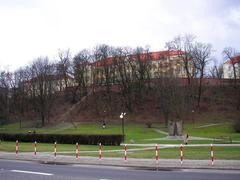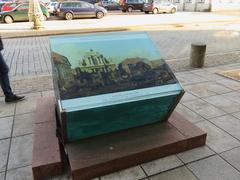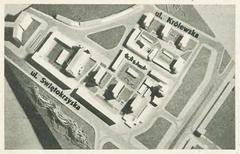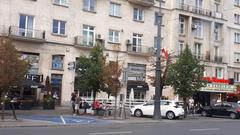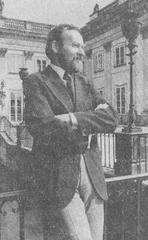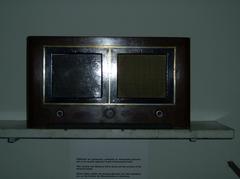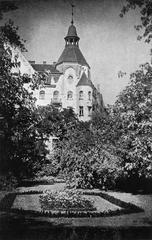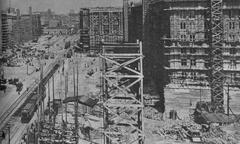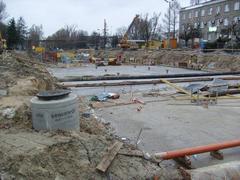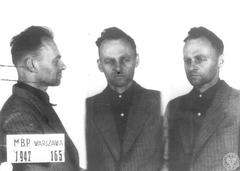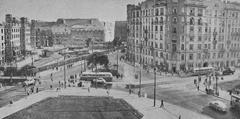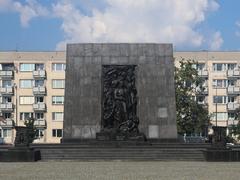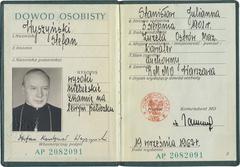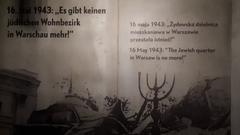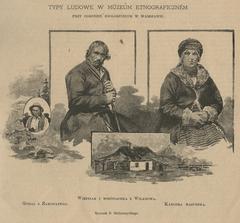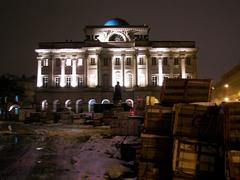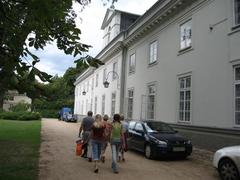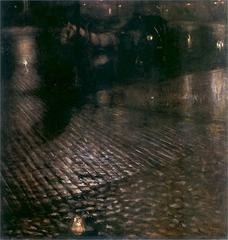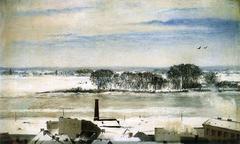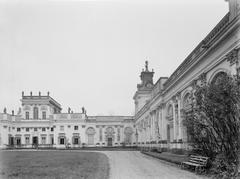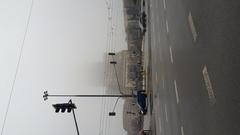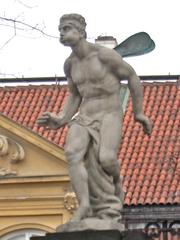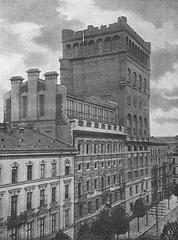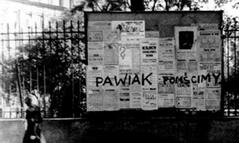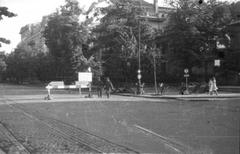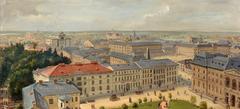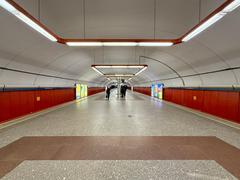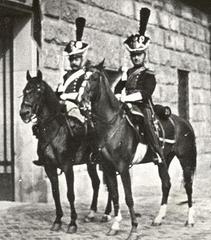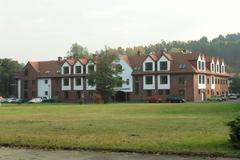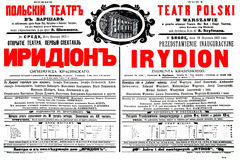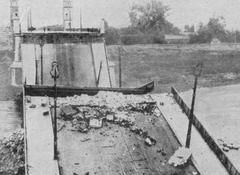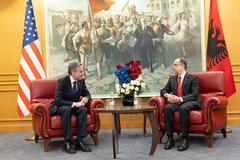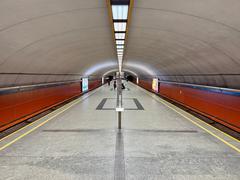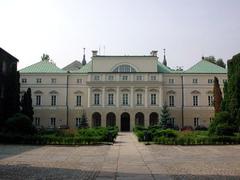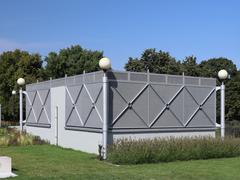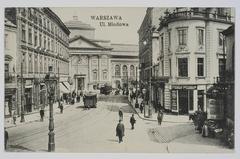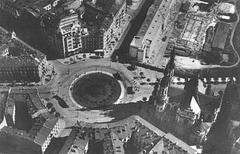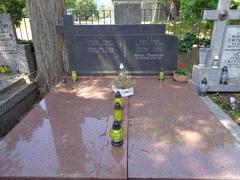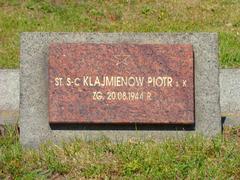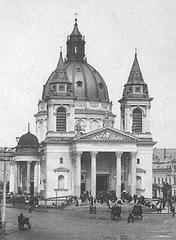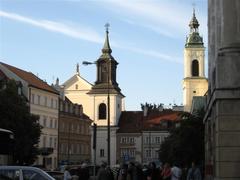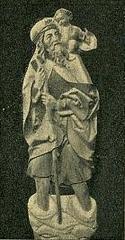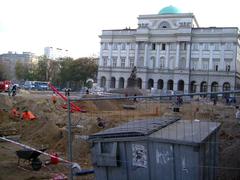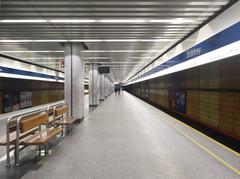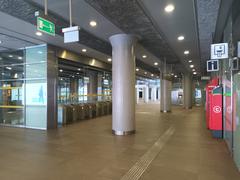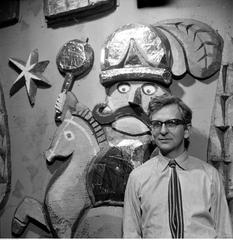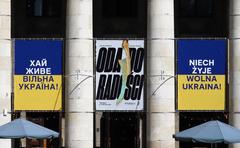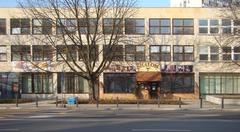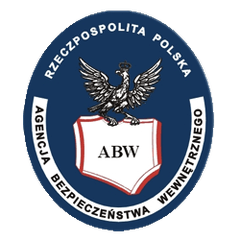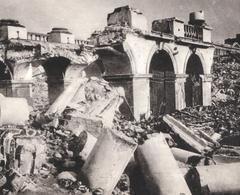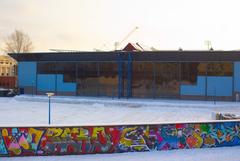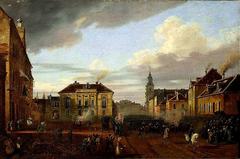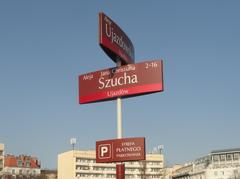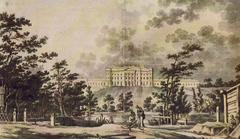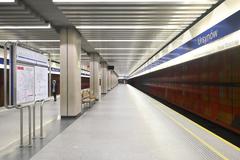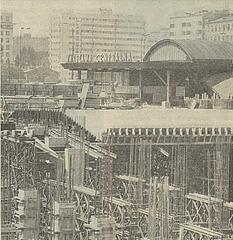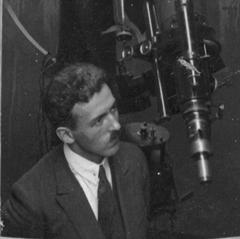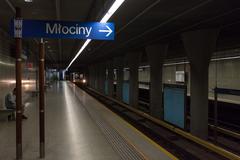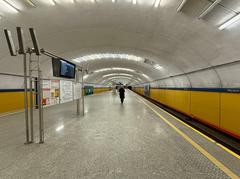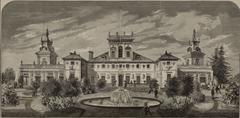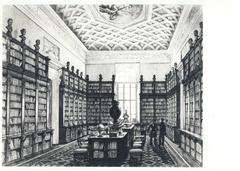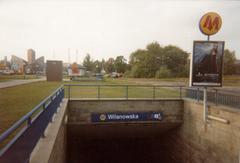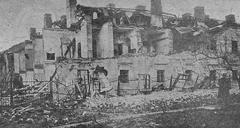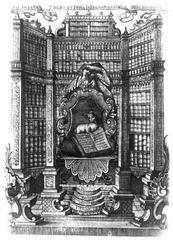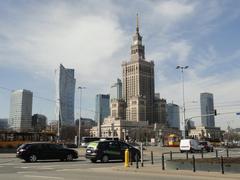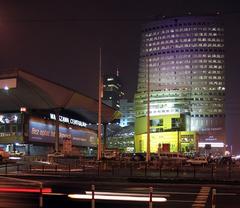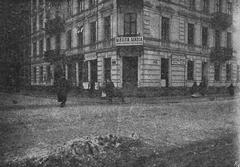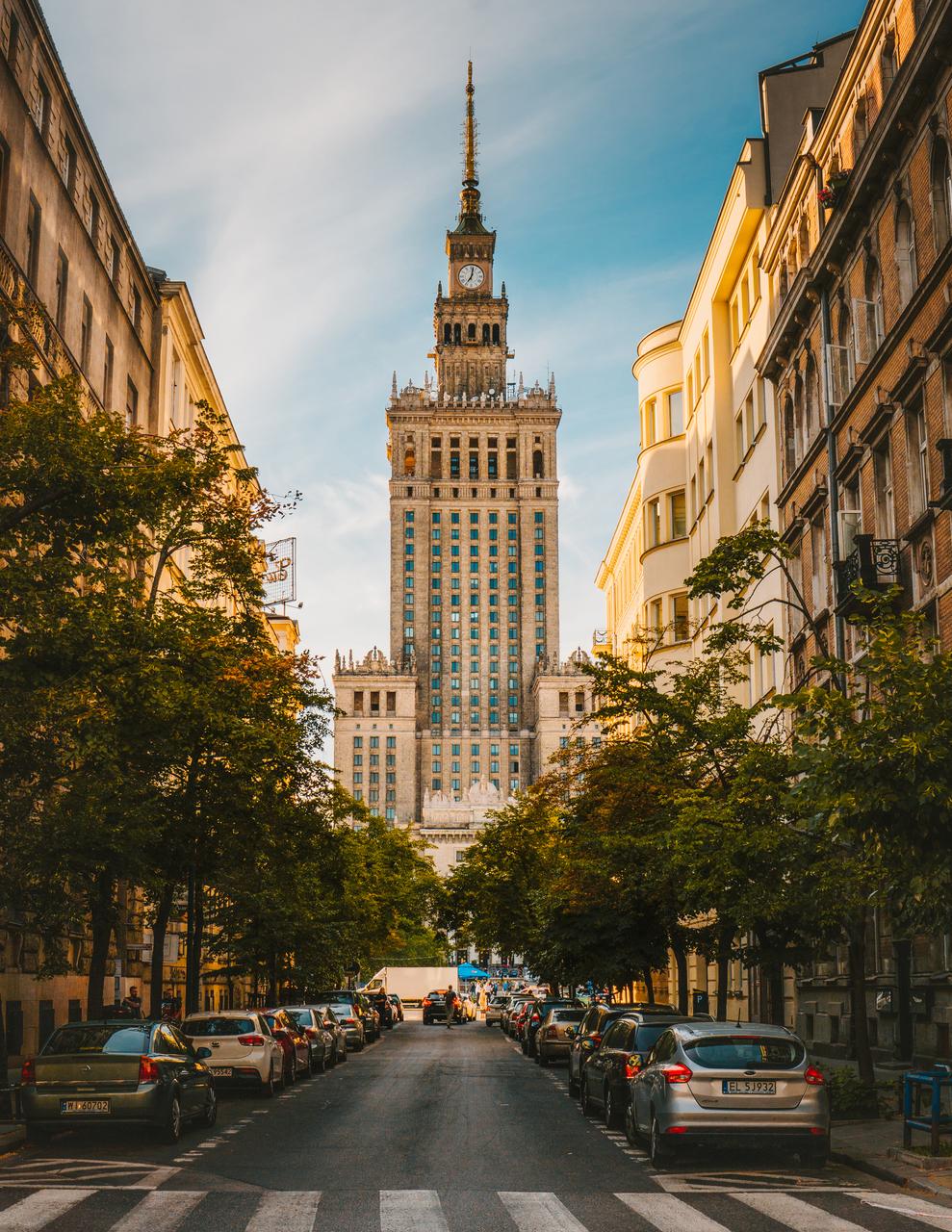
Comprehensive Guide to Visiting Warsaw, Masovian Voivodeship, Poland
Date: 13/08/2024
Captivating Introduction
Imagine a city that has mastered the art of rebirth, rising from the ashes like a phoenix to become a vibrant metropolis. Welcome to Warsaw, the heart of Poland, where history, culture, and resilience blend seamlessly. From its humble beginnings as a fishing village in the late 13th century, Warsaw has grown into a dynamic city that has witnessed and survived numerous challenges and upheavals. Whether you’re wandering through the meticulously reconstructed Old Town, exploring the artistic treasures of the Royal Castle, or feeling the pulse of modernity in the bustling city center, Warsaw offers a unique blend of old-world charm and contemporary vibrancy. (Travel and Leisure, AP News)
Warsaw’s history is a testament to its resilience. From the royal opulence of the Polish-Lithuanian Commonwealth to the industrial dreams and revolutionary screams of the 19th century, the city has always been a center of political and cultural significance. The devastating impact of World War II, particularly the Warsaw Uprising, left the city in ruins, but Warsaw’s indomitable spirit led to its post-war reconstruction, earning it a place on the UNESCO World Heritage List. Today, Warsaw stands as a symbol of resilience and renewal, embracing its past while looking forward to a bright future. (ABC News, Travel with Bender, Use Bounce)
For travelers, Warsaw is a sensory delight. Feel the cobblestones of Old Town underfoot, hear the melodies of street musicians, smell the enticing aroma of pierogi, taste the sweetness of paczki (Polish doughnuts), and see the stunning views along the Vistula River. But beyond the obvious attractions, Warsaw is full of hidden gems and local secrets waiting to be discovered. Whether it’s the neon glow of the Neon Museum or the quirky charm of the Fotoplastikon, there’s always something new and exciting to explore. Ready to uncover the city’s secrets? Let our comprehensive guide be your trusted companion as you embark on an unforgettable journey through Warsaw. (Travel and Leisure)
Table of Contents
- Historical Overview
- Welcome to Warsaw: A Tale of Resilience and Revival
- Early History and Founding
- The Royal Era: Opulence and Oppression
- 19th Century: Industrial Dreams and Revolutionary Screams
- World War I and Interwar Period: A Phoenix Rising
- World War II and the Warsaw Uprising: The City’s Darkest Hour
- Post-War Reconstruction: Rising from the Ashes
- Modern Era: A Cultural Renaissance
- Commemorating the Warsaw Uprising: Honoring the Brave
- Insider’s Guide: Discovering Warsaw’s Hidden Gems
- Engage All Senses: Warsaw’s Vibrant Vibes
- Mini-Quests: Experience Warsaw Like a Local
- Cultural Etiquette: Warsaw 101
- Practical Info with a Twist
- Pop Culture Connections
- Time-Based Itineraries: Choose Your Adventure
- Local Lingo Lessons
- Seasonal Highlights: Warsaw’s Year-Round Charm
- Myth Busting: The Real Warsaw
- Storytelling: The Legend of the Warsaw Mermaid
- FAQs: Your Burning Questions Answered
- Call to Action: Explore with Audiala
- Significance of Warsaw
- Unraveling Warsaw’s Secrets: A Captivating Introduction
- Historical Significance: A Tale of Resilience
- Cultural Significance: Warsaw’s Creative Pulse
- Architectural Significance: A Blend of Old and New
- Economic Significance: Warsaw’s Dynamic Heartbeat
- Visitor Tips: Insider Advice for the Savvy Traveler
- Key Attractions: Must-See Marvels
- Top Attractions in Warsaw
Unveiling Warsaw: A Journey Through Time and Triumph
Welcome to Warsaw: A Tale of Resilience and Revival
Imagine a city that has been rebuilt so many times, it practically has a PhD in resilience. Welcome to Warsaw, where history and modernity blend seamlessly, and each street whispers tales of a heroic past. Let’s dive into the heart of Poland’s vibrant capital!
Early History and Founding
Picture this: the late 13th century, a quaint fishing village on the Vistula River. The Dukes of Mazovia saw potential, and voila, Warsaw was born! By the 14th century, it was the dukes’ seat, and in 1596, King Sigismund III Vasa decided to make it the capital, moving from Kraków – talk about a promotion! (Travel and Leisure).
The Royal Era: Opulence and Oppression
Fast forward to the 17th and 18th centuries, and Warsaw is living its best royal life. The Royal Castle expanded, becoming a palace fit for monarchs. The city was a cultural and political hub, thanks to the Polish-Lithuanian Commonwealth. But as with any good drama, there were plot twists – the partitions of Poland in the late 18th century, and Warsaw found itself under Prussian and Russian control (Travel with Bender).
19th Century: Industrial Dreams and Revolutionary Screams
The 19th century was like a rollercoaster for Warsaw. Uprisings like the November Uprising of 1830 and the January Uprising of 1863 showed the city’s fierce spirit. Despite the political turmoil, Warsaw’s industrial revolution kicked off, transforming it into a bustling commercial center, complete with railways and factories. The city was buzzing with growth and diversity (Use Bounce).
World War I and Interwar Period: A Phoenix Rising
World War I ended with a big win for Poland – independence in 1918! Warsaw was reinstated as the capital and entered a golden age of modernization and cultural renaissance. New buildings sprang up, universities flourished, and the arts scene was booming. Unfortunately, this renaissance was cut short by the advent of World War II (Travel and Leisure).
World War II and the Warsaw Uprising: The City’s Darkest Hour
Warsaw during World War II was nothing short of a horror story. Occupied by Nazi Germany in 1939, the city endured immense suffering. The Warsaw Ghetto was a tragic chapter. In 1944, the Warsaw Uprising showcased the city’s indomitable spirit, as the Polish underground Home Army fought bravely against the Nazis. The uprising lasted 63 days, with devastating losses and the city left in ruins (AP News).
Post-War Reconstruction: Rising from the Ashes
Post-World War II Warsaw faced the challenge of reconstruction under Soviet influence. The city’s phoenix-like rise involved meticulous restoration of iconic buildings like the Royal Castle and the Old Town, based on historical records. The socialist realist architecture, including the Palace of Culture and Science, became a symbol of resilience (Travel with Bender).
Modern Era: A Cultural Renaissance
The fall of communism in 1989 heralded a new dawn for Warsaw. Embracing democracy and market reforms, the city flourished into a vibrant metropolis. Today, Warsaw is a dynamic blend of the old and the new, with cultural institutions like the POLIN Museum of the History of Polish Jews and the Warsaw Rising Museum celebrating its rich heritage (Travel and Leisure).
Commemorating the Warsaw Uprising: Honoring the Brave
Every year on August 1st, Warsaw pauses to remember the heroes of the Warsaw Uprising. Sirens wail, church bells ring, and the city stands still in respect. The 80th anniversary in 2024 was especially poignant, with ceremonies that brought together dignitaries and locals. The passing of Barbara Sowa, the oldest surviving insurgent at 106, underscored the importance of remembering their sacrifice (ABC News).
Insider’s Guide: Discovering Warsaw’s Hidden Gems
For visitors keen on exploring, don’t miss these key sites:
- The Royal Castle: A symbol of Poland’s royal heritage, meticulously reconstructed post-WWII.
- Old Town: A UNESCO World Heritage site with colorful tenement houses and a historic market square.
- POLIN Museum of the History of Polish Jews: Dive into the rich history and culture of Polish Jews.
- Warsaw Rising Museum: Experience the 1944 uprising through immersive exhibits.
- Palace of Culture and Science: A Soviet-era gift offering panoramic city views (Travel and Leisure).
But wait, there’s more! Discover hidden treasures like the Neon Museum, showcasing Warsaw’s neon sign history, or the quirky Fotoplastikon, a 3D photo viewer from the early 20th century.
Engage All Senses: Warsaw’s Vibrant Vibes
Feel the cobblestones of Old Town underfoot, hear the melodies of street musicians, smell the enticing aroma of pierogi, taste the sweetness of paczki (Polish doughnuts), and see the stunning Vistula River views. Warsaw is a sensory delight!
Mini-Quests: Experience Warsaw Like a Local
- Scavenger Hunt: Find the hidden mermaid statues around the city for a fun family activity.
- Pierogi Quest: Hunt for the best pierogi in town – try Zapiecek or U Fukiera.
- Cultural Challenge: Attend a local theater performance and experience Polish art firsthand.
Cultural Etiquette: Warsaw 101
- Greet with a Smile: A friendly ‘Dzień dobry’ (Good day) goes a long way.
- Mind the Queue: Poles take their queuing seriously – no cutting in line!
- Toast with Vodka: When in Warsaw, toast with a hearty ‘Na zdrowie!’ (To your health) and maintain eye contact.
Practical Info with a Twist
Need to get around? Warsaw’s public transport is top-notch! Hop on a tram or bus – think of it as a moving coffee shop with WiFi. And don’t forget to try the Veturilo bike rental for a breezy ride along the Vistula.
Pop Culture Connections
Warsaw has starred in several movies and books. Check out the film ‘The Pianist’ for a moving portrayal of Warsaw during WWII, or read Isaac Bashevis Singer’s works for a literary journey through the city’s Jewish history.
Time-Based Itineraries: Choose Your Adventure
- One Day: Start with a sunrise view from the Palace of Culture and Science, explore Old Town, visit the Royal Castle, and end with a nightcap at a local bar.
- Three Days: Dive deeper with trips to the POLIN Museum, Lazienki Park, and a Vistula River cruise.
- One Week: Immerse yourself in Warsaw’s culture with local festivals, day trips to Wilanów Palace, and culinary tours.
Local Lingo Lessons
Learn a few Polish phrases to impress the locals:
- Dzień dobry (Jen-doh-bri) – Good day
- Dziękuję (Jen-koo-ye) – Thank you
- Proszę (Proh-sheh) – Please/You’re welcome
- Na zdrowie (Nah zdro-vyeh) – Cheers/To your health
Seasonal Highlights: Warsaw’s Year-Round Charm
- Spring: Cherry blossoms in Łazienki Park – a floral paradise.
- Summer: Enjoy outdoor concerts and riverfront activities.
- Autumn: Golden foliage in Wilanów Gardens – perfect for a stroll.
- Winter: Christmas markets and ice skating rinks turn Warsaw into a winter wonderland.
Myth Busting: The Real Warsaw
Think Warsaw is all grey and grim? Think again! The city’s vibrant cultural scene, colorful Old Town, and lively nightlife will surprise you. Warsaw is a city pulsating with life and creativity.
Storytelling: The Legend of the Warsaw Mermaid
Legend has it that a mermaid, Syrenka, swam up the Vistula River and fell in love with the city. Captured by a greedy merchant, she was freed by the townsfolk. In gratitude, she promised to protect Warsaw, and her image now graces the city’s coat of arms.
FAQs: Your Burning Questions Answered
- Best time to visit? Spring and autumn are perfect for mild weather and fewer crowds.
- Currency? Polish Zloty (PLN).
- Language? Polish, but English is widely spoken in tourist areas.
Call to Action: Explore with Audiala
Ready to uncover Warsaw’s secrets? Download the Audiala app for an immersive tour guide experience. Get insider tips, interactive maps, and personalized itineraries. Warsaw awaits your adventure – let Audiala be your guide!
Discover Warsaw: A City of Resilience, Culture, and Charm
Unraveling Warsaw’s Secrets: A Captivating Introduction
Imagine a city that rose from the ashes, a testament to resilience and rebirth. Warsaw, the heart of Poland, is just that—a city that has seen it all and come out stronger. From medieval trade hub to modern cultural powerhouse, Warsaw is a place where history and innovation coexist in perfect harmony. Let’s embark on a journey through its vibrant streets, where every corner has a story to tell.
Historical Significance: A Tale of Resilience
Warsaw’s saga begins in the 13th century as a humble fishing village. By the late Middle Ages, it had transformed into a thriving trade hub, thanks to its strategic location on the Vistula River. In 1529, Warsaw became the capital of the Masovian Voivodeship, a title it proudly holds to this day (source).
But it’s the city’s spirit of resilience that truly defines its history. The Warsaw Uprising of 1944, a valiant but ultimately unsuccessful attempt by the Polish resistance to liberate the city from German occupation, left Warsaw in ruins. Yet, the meticulous post-war reconstruction of the Old Town earned it a place on the UNESCO World Heritage List in 1980 (source). Warsaw’s history is a living, breathing testament to the indomitable spirit of its people.
Cultural Significance: Warsaw’s Creative Pulse
Warsaw is a cultural epicenter brimming with artistic energy. Whether you’re wandering through the National Museum, marveling at the treasures of the Warsaw Uprising Museum (source), or getting hands-on at the interactive Copernicus Science Centre (source), there’s something to ignite your curiosity. The city’s cultural calendar is packed with events like the Warsaw Film Festival and the International Chopin Piano Competition (source).
But beyond the well-trodden paths, Warsaw hides its quirky gems. Discover the neon glow of the Neon Museum, or get lost in the murals of the Praga district. These hidden spots reveal the city’s creative soul and offer a unique perspective on Warsaw’s artistic landscape.
Architectural Significance: A Blend of Old and New
Warsaw’s skyline is a fascinating blend of history and modernity. The Old Town, with its cobblestone streets and colorful townhouses, is a UNESCO World Heritage site (source). Meanwhile, the towering Palace of Culture and Science, a Soviet-era gift, stands as a symbol of Socialist Realist architecture (source).
Modern marvels like the Warsaw Spire and Varso Tower—now the tallest building in the European Union (source)—add to the city’s dynamic skyline. Each structure tells a story, from the whispers of the past to the promises of the future.
Economic Significance: Warsaw’s Dynamic Heartbeat
As Poland’s economic powerhouse, Warsaw is a city on the move. It’s home to the Warsaw Stock Exchange, one of Central and Eastern Europe’s largest (source), and a hub for international corporations. The city’s economy thrives on diversity, with strong sectors in finance, technology, and manufacturing.
Warsaw’s startup scene is buzzing with innovation, supported by numerous incubators and accelerators. This economic dynamism is reflected in its rapid development, making Warsaw one of the fastest-growing cities in the European Union (source).
Visitor Tips: Insider Advice for the Savvy Traveler
Best Time to Visit
Late spring (May to June) and early autumn (September to October) offer mild weather and fewer crowds. Summer (July to August) is also popular but can be hot and bustling.
Getting Around
Warsaw’s public transportation—buses, trams, and a metro—is efficient. For shorter distances, walking or cycling is ideal, especially around the compact city center.
Accommodation
From luxury hotels to budget hostels, Warsaw has it all. Stay in the city center for easy access to major attractions, or experience local life in theartsy Praga district.
Dining and Cuisine
Savor the flavors of Polish cuisine with dishes like pierogi, bigos, and żurek. Explore Warsaw’s vibrant food markets, such as Hala Koszyki and Hala Gwardii, for a taste of local delicacies (source).
Safety and Etiquette
Warsaw is generally safe, but standard precautions apply. Polish hospitality is legendary, and a few basic phrases like “dziękuję” (thank you) and “proszę” (please) can go a long way.
Key Attractions: Must-See Marvels
Royal Castle
Once the residence of Polish monarchs, the Royal Castle is now a museum showcasing royal apartments and art collections (source).
Łazienki Park
The Royal Baths Park, Warsaw’s largest, features beautiful gardens, palaces, and the iconic Chopin Monument. It’s perfect for leisurely strolls and outdoor concerts (source).
Wilanów Palace
Known as the “Polish Versailles,” Wilanów Palace offers a glimpse into the opulent lifestyle of Polish nobility (source).
POLIN Museum of the History of Polish Jews
This museum provides a comprehensive overview of the Jewish community’s contributions to Polish society and the Holocaust (source).
Top Attractions in Warsaw
Old Town (Stare Miasto)
Despite being almost entirely destroyed during World War II, Warsaw’s Old Town was meticulously rebuilt, using Bernardo Bellotto’s 18th-century paintings as references. The Old Town is a vibrant area filled with cobblestone streets, colorful buildings, and historical landmarks. Key highlights include:
- Old Town Market Square: This central square is surrounded by charming townhouses and is home to numerous cafes and restaurants. It’s a great place to relax and soak in the atmosphere.
- Royal Castle: Located at the entrance of the Old Town, the Royal Castle was the official residence of Polish monarchs. Today, it serves as a museum showcasing royal apartments and art collections.
- St. John’s Archcathedral: This Gothic cathedral is one of the oldest churches in Warsaw and has been the site of many significant events in Polish history.
Royal Route (Trakt Królewski)
The Royal Route is a historic road that connects the Royal Castle with Wilanów Palace. This route is lined with important landmarks, parks, and palaces, making it a perfect way to explore the city’s rich history. Notable stops along the Royal Route include:
- Presidential Palace: The official residence of the President of Poland, this neoclassical building is an important political landmark.
- University of Warsaw: One of the oldest and most prestigious universities in Poland, its campus is worth a visit for its beautiful architecture.
- Łazienki Park: This expansive park is home to the Łazienki Palace, also known as the Palace on the Isle. The park features beautiful gardens, pavilions, and a famous statue of Frederic Chopin.
Łazienki Park
Designed in the 17th century, Łazienki Park is Warsaw’s largest park and a favorite spot for both locals and tourists. The park is a serene escape from the bustling city and offers several attractions:
- Palace on the Isle: This small palace is situated on an artificial island in the middle of a lake. It was originally a bathhouse and later transformed into a royal residence.
- Amphitheater: Inspired by ancient Roman theaters, this open-air venue hosts various cultural events and performances.
- Chopin Monument: A tribute to the famous composer Frederic Chopin, this monument is a popular spot for outdoor concerts during the summer.
Wilanów Palace
Wilanów Palace, often referred to as the “Polish Versailles,” is a stunning example of Baroque architecture. Built in the late 17th century, it served as the summer residence of King Jan III Sobieski. The palace is surrounded by beautiful gardens and houses a museum showcasing royal artifacts and art collections. Visitors can explore the opulent interiors and learn about the history of the Polish monarchy.
POLIN Museum of the History of Polish Jews
Located on the site of the former Warsaw Ghetto, the POLIN Museum is dedicated to preserving the history and culture of Polish Jews. The museum’s unique design resembles an open book, symbolizing a dialogue between the past and present. Exhibits cover over a thousand years of Jewish history in Poland, from medieval times to the present day. The museum also hosts temporary exhibitions, educational programs, and cultural events.
Warsaw Uprising Museum
The Warsaw Uprising Museum is a poignant tribute to the 1944 uprising against Nazi occupation. The museum provides a comprehensive overview of the events leading up to the uprising, the brutal battles, and the aftermath. Interactive exhibits, photographs, and personal stories bring the history to life, offering a deep understanding of the resilience and bravery of the Polish people.
Chopin Museum
Frederic Chopin, one of the most famous composers in history, spent his early years in Warsaw. The Chopin Museum, located in the Ostrogski Palace, offers an in-depth look at his life and work. The museum features original manuscripts, letters, and personal items, as well as interactive exhibits that allow visitors to listen to his music.
National Museum
The National Museum in Warsaw is the main art museum in the city, housing an extensive collection of Polish and international art. The museum’s exhibits range from ancient artifacts to contemporary works, including pieces from ancient Greece, Egypt, and Europe. Highlights include the Gallery of Medieval Art and the Gallery of 19th Century Art. The museum also hosts temporary exhibitions and educational programs.
Powązki Cemetery
Powązki Cemetery is one of the oldest and most famous cemeteries in Warsaw. Established in 1790, it is the final resting place of many notable Polish figures, including writers, artists, and politicians. The cemetery is known for its beautiful tombstones and mausoleums, making it a peaceful place to reflect on Poland’s history and heritage.
Warsaw Barbican
The Warsaw Barbican is a historic fortification that once formed part of the city’s defensive walls. Built in the 16th century, it was heavily damaged during World War II but has since been restored. Today, it serves as a popular tourist attraction and a symbol of Warsaw’s resilience. The Barbican is located at the entrance to the Old Town and offers great views of the surrounding area.
Visitor Tips
- Best Time to Visit: The best time to visit Warsaw is during the summer months (June to August) when the weather is warm and pleasant. However, the shoulder seasons (April-May and September-October) also offer mild temperatures and fewer crowds.
- Getting Around: Warsaw has an efficient public transportation system, including buses, trams, and a metro. Tickets cost between 3-5 PLN and are valid for 75 minutes. Day passes and multi-day passes are also available. Alternatively, Uber is a convenient and affordable option for getting around the city.
- Accommodation: Warsaw offers a range of accommodation options, from budget hostels to luxury hotels. Recommended places to stay include Hotel Polonia Palace and the Apple Inn, both of which are centrally located and highly rated.
By exploring these top attractions, visitors can gain a deep appreciation for Warsaw’s rich history, vibrant culture, and resilient spirit. Ready to uncover the city’s secrets? Download Audiala, our tour guide app, and let it be your personal guide through Warsaw’s enchanting streets and stories.
Call to Action
As your journey through Warsaw comes to a close, it’s clear that this city is much more than a collection of historical landmarks and cultural institutions. Warsaw is a living, breathing testament to the resilience and creativity of its people. From the meticulously reconstructed Old Town to the modern architectural marvels like the Varso Tower, Warsaw seamlessly blends the old with the new, offering a unique travel experience that is both enriching and inspiring. Whether you’ve wandered through the Royal Route, explored the lush gardens of Łazienki Park, or delved into the poignant history of the Warsaw Uprising Museum, each experience has contributed to a deeper understanding of this remarkable city. (Travel with Bender, Travel and Leisure)
Warsaw’s cultural scene is a vibrant tapestry of art, music, and history. The city’s festivals, museums, and hidden gems like the Neon Museum and Praga district murals provide a glimpse into its creative soul. And let’s not forget the culinary delights—whether you’re savoring traditional Polish dishes like pierogi and bigos or exploring the vibrant food markets, Warsaw’s gastronomic offerings are sure to leave a lasting impression. The city’s dynamic economy, supported by a thriving startup scene and international corporations, further adds to its allure, making Warsaw a city that is constantly evolving and growing. (AP News, Culture and Clil)
But beyond the attractions and experiences, what truly sets Warsaw apart is its spirit. The resilience and determination of its people, the rich cultural heritage, and the seamless blend of history and modernity make Warsaw a city like no other. As you reflect on your adventures, remember that Warsaw is not just a destination—it’s an experience that stays with you long after you’ve left. Ready to explore more? Download the Audiala app and let it be your guide as you uncover even more of Warsaw’s hidden treasures and stories. With expert insights and interactive maps, Audiala is the perfect companion for curious travelers eager to delve deeper into the heart of this extraordinary city. (Travel and Leisure, ABC News)
References
- Travel and Leisure, 2023, Travel and Leisure
- Travel with Bender, 2023, Travel with Bender
- AP News, 2023, AP News
- Use Bounce, 2023, Use Bounce
- ABC News, 2023, ABC News
- Culture and Clil, 2019, Culture and Clil









